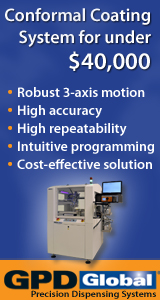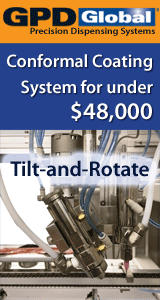Printed Circuit Board Assembly & PCB Design Forum
SMT electronics assembly manufacturing forum.
- SMTnet
- »
- Electronics Forum
- »
- Step stencil troubles
Step stencil troubles
![]() Hi all,
does anyone of you use step stencils for paste appl...
- Sep 17, 2004
by
sly
Hi all,
does anyone of you use step stencils for paste appl...
- Sep 17, 2004
by
sly
![]()
![]()
![]() Yes, i have used and experienced problems with step stencils...
- Sep 17, 2004
by
Yes, i have used and experienced problems with step stencils...
- Sep 17, 2004
by
![]()
![]() Hi Simon,
thanks for answering so fast.
Well, our compan...
- Sep 17, 2004
by
sly
Hi Simon,
thanks for answering so fast.
Well, our compan...
- Sep 17, 2004
by
sly
![]()
![]()
![]() Step stencils are used but only when necessary. One reason ...
- Sep 17, 2004
by
RDR
Step stencils are used but only when necessary. One reason ...
- Sep 17, 2004
by
RDR
![]()
![]()
![]() We agree with Russ.
* Haven't used them in 10+ years.
* Si...
- Sep 17, 2004
by
davef
We agree with Russ.
* Haven't used them in 10+ years.
* Si...
- Sep 17, 2004
by
davef
![]()
![]()
![]() Hi russ,
thanks for answers, I thought that playing with ap...
- Sep 17, 2004
by
sly
Hi russ,
thanks for answers, I thought that playing with ap...
- Sep 17, 2004
by
sly
![]()
![]()
![]() I also agree with Russ - we use step stencils when we have t...
- Sep 17, 2004
by
I also agree with Russ - we use step stencils when we have t...
- Sep 17, 2004
by
![]()
![]() You are right, playing with apertures is how to ensure relea...
- Sep 17, 2004
by
RDR
You are right, playing with apertures is how to ensure relea...
- Sep 17, 2004
by
RDR
![]()
![]()
![]() I have an application that uses 0201 devices coupled wit...
- Sep 17, 2004
by
I have an application that uses 0201 devices coupled wit...
- Sep 17, 2004
by
- SMTnet
- »
- Electronics Forum
- »
- Step stencil troubles







